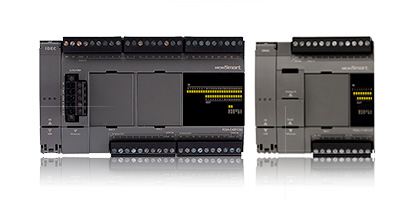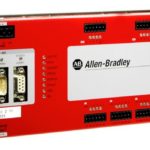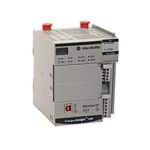Two of the most common control architectures for motion control systems are PC-based controls and PLCs (programmable logic controllers.) But how does one choose between them? What factors are involved in making the decision?
Speed
One of the most critical factors involves computation or processing speed. PLCs have traditionally had the edge here, being designed for dedicated control tasks with the processor handling specific motion tasks. PCs, on the other hand, may be doing multiple tasks besides the motion control, cause competition for computing resources. However, with the speed of today’s PC processors, this may not be much of an issue anymore. PCs have higher processing speeds in general which may be more suitable for complex motion tasks that a PLC may not be able to accommodate.
Memory is another key issue impacting speed, with the edge going to PCs because they generally have much more memory and thus the ability to store more data. As for PLC advantages, they’re specifically designed to handle large amounts of I/O, and thus optimized for more efficient data processing.
Stability
Another issue, especially for PCs, is system stability. Does the operating system (OS) have the capability to be stable and not crash? While it may have once been a concern (getting the so-called Blue Screen of Death), today’s PC operating systems are more stable so that the issue is much less of a concern.

Ease of use
The PC OS is more familiar to more people, so it’s easier to use and troubleshoot rather than a PLC with a specialized interface. Plus, the graphical user interface is a familiar one that makes working with such a system easier. PCs also leverage hardware that is readily available and gets updated frequently, making it easier to update than a PLC. So a PC-based system may be easier to configure and maintain as PC know-how is readily available.
Operation
PLCs are also designed to be really good at a limited number of tasks such as I/O processing, monitoring, and timing functions, and so are easier to implement. They also aren’t doing other things that a PC would be engaged in, such as downloading system updates or upgrades or other tasks.
Cost
How about cost? Does one or another option offer a cost advantage? It depends. What’s true across the board is that falling silicon prices have meant more processing power for less money. And that means that the processors used in both PLCs and PC-based controls give designers more for less. So in one sense there may not be such a big price difference for comparable systems. However, cost will vary depending on factors such as I/O, expansion modules, memory, and other such factors.
In the end, a sizable number of engineers may always look to PLCs as their go-to solution. But the increasing emphasis on data and information exchange as part of next-gen automation and the IoT may make PC-based controls a more attractive choice.
It’s helpful to keep in mind one of the most important and practical pieces of wisdom in engineering; that there is usually no one correct answer to a design problem. Typically there is a range of options, some better, some worse.






Leave a Reply
You must be logged in to post a comment.